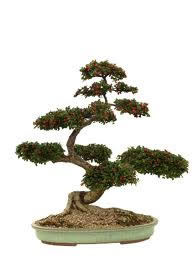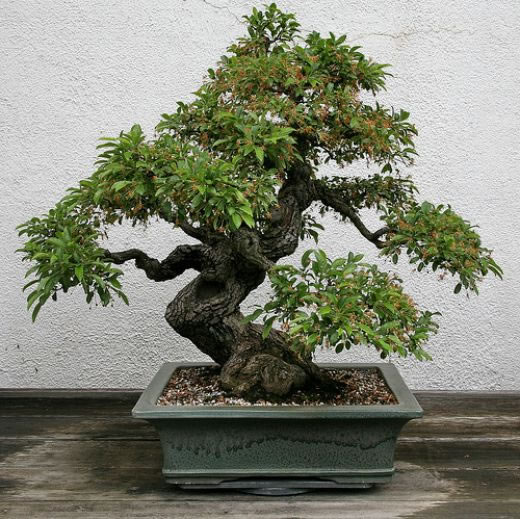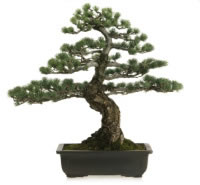Bonsai Trees
by Travis Hagen
Plant Sciences 211, Fall 2010
NDSU
   |
||
History
Bonsai is an ancient Japanese art form using miniature trees grown in small containers. The word bonsai is composed of two parts, bon meaning tray-like pot and sai meaning planting. This tradition dates back over a thousand years, originating from the older Chinese tradition of penjing.
Cultivation
Bonsai can be created by a seemingly unlimited number of tree species. Trees can be grown from seed. They may be propagated through cuttings, layering, or grafting. They can be purchased from a nursery, found in the wild, or even purchased already in a bonsai form from a commercial bonsai grower.
Common Styles
Chokkan - formal upright style, Moyogi - informal upright style, Shakan - Slant style, Netsuranari - Raft style, Bunjin-gi - Literati style, Yose Ue - Forest Style, Ikadabuki - Multi-trunk style, Sharimiki - Shari Style, Sekijoju - Root over rock style, & Ishizuke - Growing in a rock style
Care & Techniques
Caring for these small trees requires great skill and knowledge. Depending on species and desired styles will determine how the specific tree is cared for. Watering, repotting, location to sun, soil composition, fertilization needs are all different and determined by specific tree species. Many techniques can be used including leaf trimming, branch pruning, root pruning, trunk pruning, wiring branches and trunk, clamping, grafting, and dead wooding.
References
http://www.bonsaicarebasics.com/
http://www.bonsaigardener.org/